Saying that it’s winter in Georgia is a bit of a contradiction to me. I grew up in Ohio and finished college there before venturing out to other areas of our amazing country. I’ve lived in Boston, Northern Virginia, and then a few more years back in Ohio before making our home in the Atlanta area. I know what a “real” winter can be like, and it’s not Georgia, which is perfectly fine with me. The Southern garden offers year round opportunities to be outside “working” in the garden. There are many chores that can be completed comfortably in the cooler months including; clearing weeds, selective pruning, regaining control of Periwinkle vines, cleaning the water barrel, planning new raised garden beds, repairing a dilapidated arbor, or designing a new flagstone patio. Of course, if you love your garden, and it’s where you want to be, the options are endless!
Here are a few things I’ve been working on lately. We’re in zone 7, so we usually have later and fewer cold periods than many of you further north. Our winters are relatively mild with snow and freezing temperatures infrequent and brief visitors.
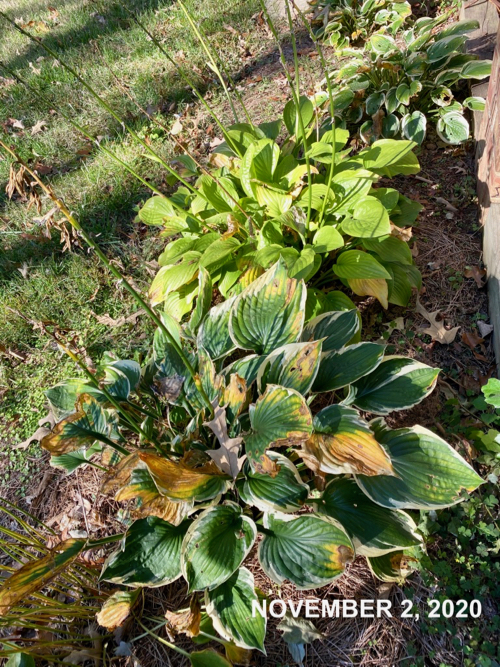
Preparing Hosta For Cold Weather
There are differing points of view regarding winter care for Hosta. For instance, some gardeners guide us to cut Hosta plants to the ground, then gather the leaves and stems and discard them, rather than compost them. The reason for discarding is that decaying Hosta leaves can harbor slug eggs.

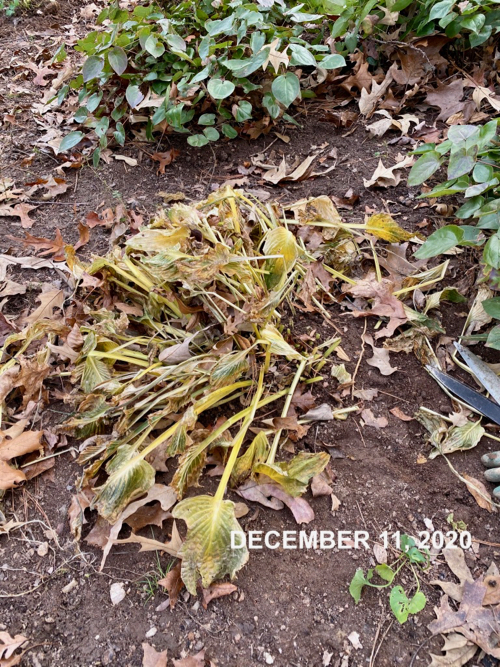
Since we’re in a warm climate, this is the process I follow in my garden. However, I’ve found that some gardeners choose to keep the leaves on their Hosta in winter to protect the plant from extremely cold weather. Precautions are taken in both of these examples, so it depends on your specific growing environment.

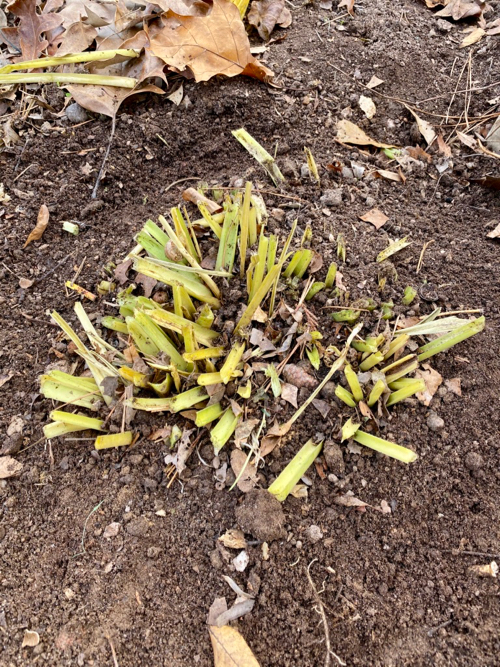
Caladiums Don’t Like Winter At All
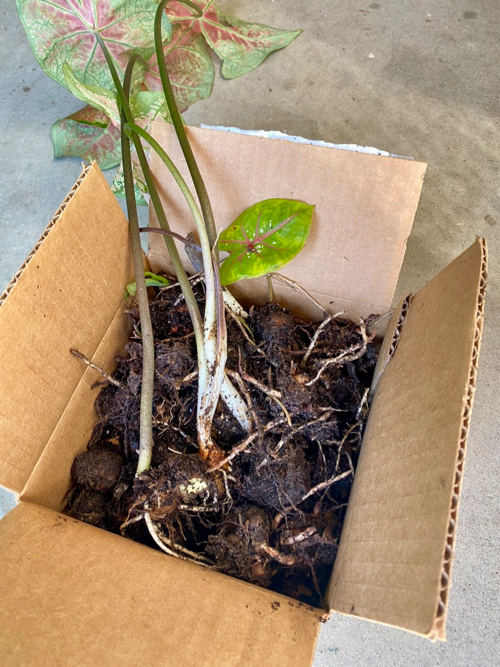
Even though Caladiums are tender perennials, they are sometimes sold as annuals for those who are happy enjoying them just for one season. The “penny pincher” side of me would never allow me to do that, so I dig them up each year, over winter them, and plant them again in spring. They graciously offer their repetitive beauty to me for just a bit more work from me.
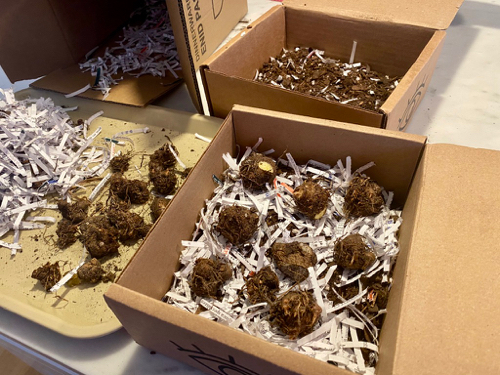
Lifting Caladium bulbs is an easy process, especially since Caladiums don’t have a deep root system. Using a trowel, simply dig under the bulbs and gently lift them up. Carefully remove some of the soil and place them where its cool and dry so they will lose some of their moisture before being stored for winter. Once dry, clip off the tops and the roots, so that you are left with the bulb only. Gently lay them in a container giving each bulb a bit of their own space so they can “breath.” A bed of peat moss or a combination of peat moss and perlite, sawdust, or newspaper will keep the bulbs dry and separated from each other.
Store the container in a dry and dark environment where the temperature is around 60° F (15° C). They will be ready and waiting for you when spring temps reach their preferred temperature of 70° F (21° C) or more during the daytime and at least 60° F (15° C) at night.
Solomon’s Seal Does A Disappearing Act
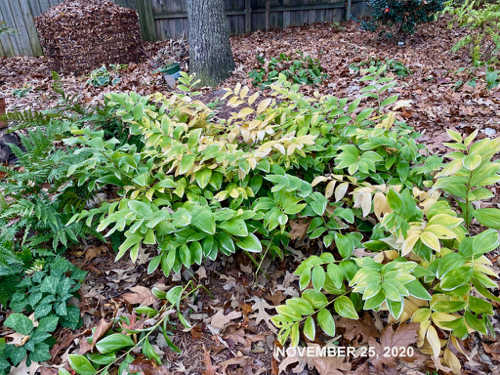
One of my favorite woodland garden plants is Solomon’s Seal. It’s a faithful grower that reasonably multiplies itself over the course of time. Its foliage alone is a beautiful addition to the garden, however the seemingly endless rows of delicate white, bell-shaped flowers in summer make it a showstopper.
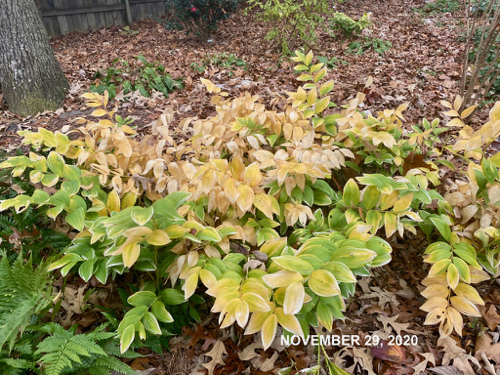
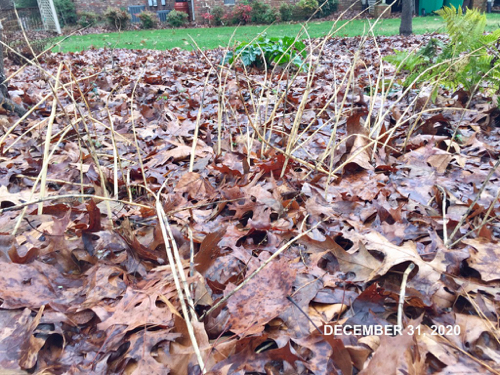
After its’ stunning performance, it goes gently and selflessly into winter and disappears, asking nothing from me in return.
Heuchera…Talk About Easy Going
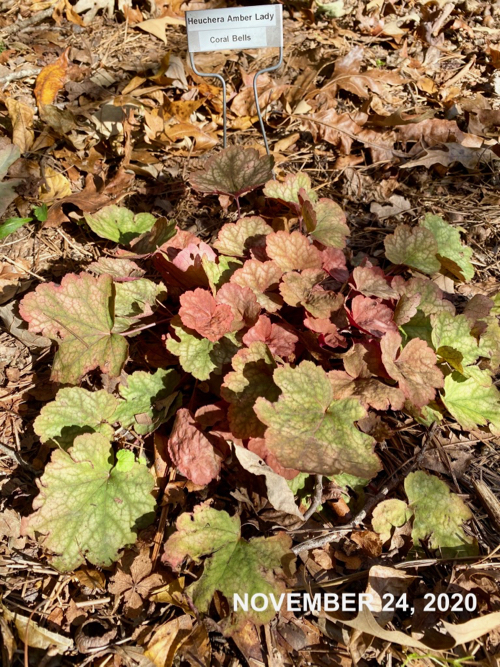
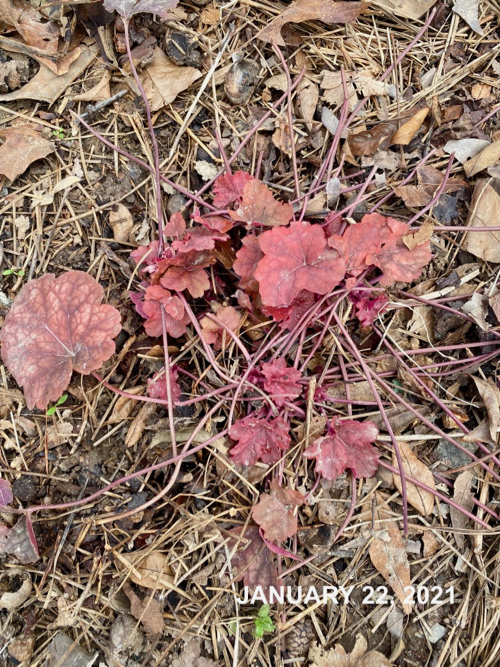
This plant is not only beautiful and easy to grow but it’s very independent in caring for itself at the end of the season. For a gardener, it doesn’t get much better than that. Removing an occasional dried leaf or spent bloom is pretty much the extent of their regular care. Heucheras stoically contribute color and beauty to the garden even in the winter months.
Remove Weeds During Winter Cleanup
In the summer months ahead, you’ll be glad that you got rid of those persistent winter weeds because they become monster growers once the sun is out more faithfully and the temperature warms. Next, clean pathways, replace torn and deteriorated weed barrier, and prune anything that can be pruned in fall, like Oakleaf Hydrangea. Then weed, weed, weed or, in a few months, you’ll probably wish you had. Been there, done that!
Don’t Forget To Clean The Rain Barrel
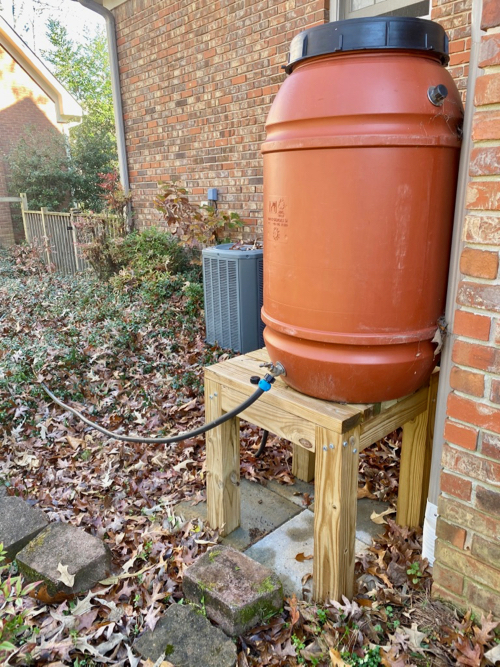
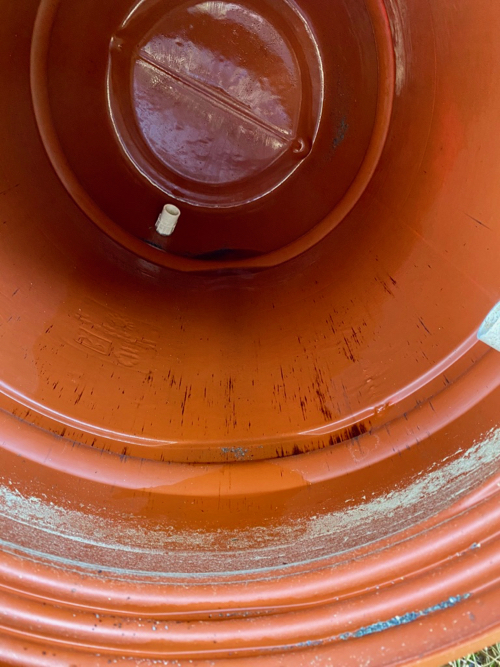
Now’s a good time to scrub the rain barrel that’s been sitting around all year. Also, you’ll want to store or prepare it for freezing weather if that’s the climate you live in.
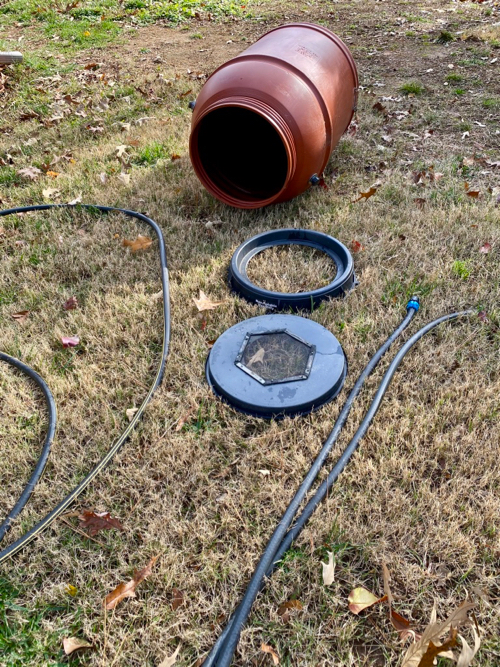
Mine was not as dirty as I had expected it would be. I sprayed it thoroughly and brushed away the dirt that had collected near the top of the barrel. It was a quick and easy job. Once it dried, I stored it under our screen porch. When I set it up later this spring it will be good to go.
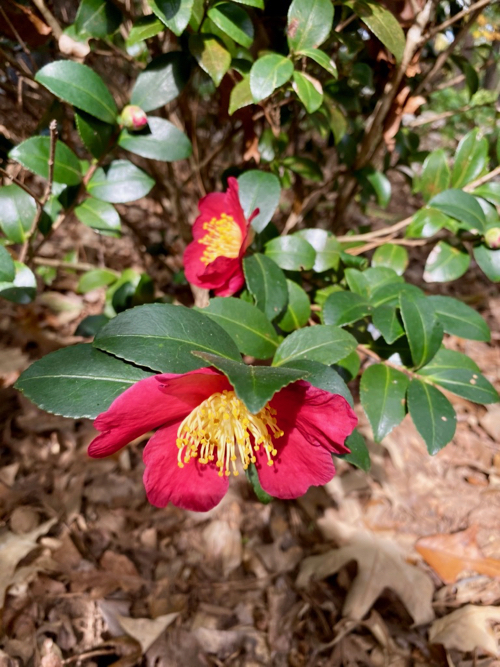
Enjoy A Winter Garden While Anticipating Spring
I am enjoying the calmness of the winter woodland garden at this moment. There’s more space to walk through and observe the hardy individual plants that seem to disappear into the green jungle of the summer garden. However, this observation of the “bones” of the garden always triggers ideas for moving some plants while adding other compatible varieties to shake things up a bit.
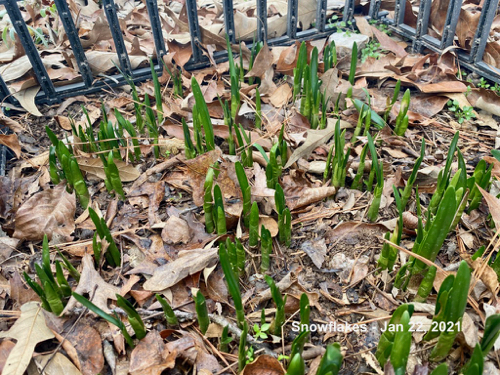
A garden is an amazing place that is always alive! You can generally count on the Yuletide Camellia blooming in December and January. Then the Snowflakes push through the soil when most other plants are still at rest. These tiny beauties generously showcase their delicate, bell shaped blooms with a meticulously placed white dot at each petal tip.
Thank you for visiting our blog. Please feel free to ask questions or make comments. It’s my great pleasure to connect with others who love their garden as much as I love mine.
Great article, enjoyed all the different plants. Not familiar with some , very informative.
Thanks, that’s good to know.